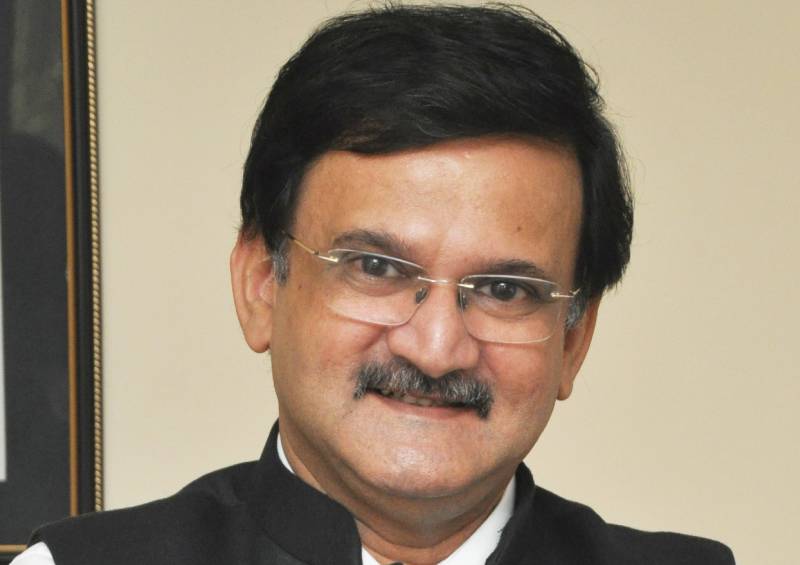FTA With EU Would Be Real Game-Changer For India

The fragmented textile value chain in India necessitates the goods to travel from one place to another, which adds to logistics cost as well as has an impact on quality, says Gurudas Aras
Historically fragmented and complex nature of our textile value chain has been taking toll on the health of our domestic industry. How can we resolve this issue in the medium to long term, even as the government has set up ambitious production and export targets?
The Indian textile industry, being quite old, has inherited certain drawbacks. Apart from the fragmented textile value chain, there are some weaker chain constituents like weaving and processing, which have become major hurdles in quality production and exports. Some of the textile clusters have come up over the years focusing only on one of the value chain stages. Major part of spinning industry is concentrated in Tamil Nadu (46% of the capacity), although cotton is grown in Gujarat, Maharashtra, Madhya Pradesh, Telangana and Andhra Pradesh. The weaving has been concentrated at Ichalkaranji, Bhiwandi, Malegaon, Surat, Bhilwara, Kishangarh and Erode etc. The knitting industry has grown in places like Tirupur, Ludhiana and Kolkata etc. while the processing has been concentrated in Ahmedabad, Surat, Bhilwara, Pali, Banswara, Tirupur and Ludhiana etc.
This fragmented value chain necessitates the goods to travel from one place to another, which adds to logistics cost as well as has an impact on quality. In short to medium term, I don’t see any solution to this issue as the industry cannot be shifted to other place so easily. The only solution is that over the long term only integrated units need to be encouraged while at the old clusters no new capacity additions should be allowed. The new schemes like PLI and PM Mitra also aim at having the value chain at one place so that there are economies of scale as well as utilisation of common resources resulting in better quality end product which is cost competitive.
What role can government’s initiatives like PLI scheme, PM MITRA and others play in creating a more robust and relevant production base? So far, most of these initiatives have not generated the desired response. Your comment.
The purpose of the new government schemes like PLI and PM Mitra etc had been quite holistic. The government wants to create new capacities, largely focusing on man-made fibre-based products and technical textiles, so that some global champions can be created. These integrated units with large capacities can produce high quality products, while manufacturing at one place will make them more cost effective. Although the initial response to these schemes was quite good, the results have been quite disappointing. Not many have opted for investment due to conditions like minimum investment benchmarks of Rs 300 crore and Rs 100 crore, as well as the condition of production increase over the years for becoming eligible for incentives. Although PLI succeeded in industries like electronics and automobile, it has sadly failed in the textile sector. It seems that government is preparing PLI 2.0 with lower investment threshold of Rs 15 crore so that even small and medium industry players can participate.
Having suffered for two consecutive years, the garment exports in the initial months have shown some signs of revival. Will this be sustained throughout the entire year?
In the last few years India has lost opportunities in the global garment trade. Some of the reasons are major concentration on cotton-based products while the global textile market is dominated by man-made fibre-based products and limited product basket due to lack of product diversification. Another reason is India lacks big capacities due to which it can’t accept large orders. Quality consistency and higher cost of manufacturing are other issues faced by Indian apparel manufacturers. In spite of China+1 opportunity, India could not take any advantage of the same, which was grabbed by Bangladesh and Vietnam.
Indian apparel manufacturers operate mainly in low value products where there is intense competition. Indian exporters also lose due to zero duty access to some textile producing countries in major markets like EU and US. Despite existing FTAs with Japan and Australia, India is still having a very low share of their garment imports. India cannot increase its apparel exports unless the manufacturers take care of product diversification with more man-made fibre-based apparel, consistency in quality and costing. After continuous fall in India’s garment exports, there has been a reversal in the last couple of months. However, it is difficult to say if this can continue during the year. Unless the basic flaws in our exports are corrected, I don’t see any major improvement in the numbers.
How crucial will be the signing of the FTAs with the UK and EU to boost our garment exports? Will the industry be able to derive the desired results with the existing product offerings?
The FTAs are very important for increasing the global trade. However, in many cases, inspite of the FTAs being signed, Indian textile exporters failed to exploit the opportunities. The best example is the Japanese market where the FTA is existing since 2013, yet the share of India in Japan’s apparel imports is below 1% whereas China enjoys 54% market share.
India-UK FTA has entered the final stage of negotiations and, once signed, it can open new opportunity for the Indian apparel exporters. According to the United Nations COMTRADE database, the UK imported $14.36 billion worth of apparel from India in 2023. This number will grow considerably once the FTA is closed. At present, China, Vietnam and Bangladesh dominate the apparel exports to UK.
The real game-changer for India would be the FTA with EU since, after the US, this is the next biggest textile market. At present, Indian textile exporters have to pay 9 to 18% import duty on various textile goods, whereas Bangladesh, Vietnam and Pakistan have duty-free access to EU.
In my opinion, only signing the FTAs is of no use. The manufacturers and exporters need to develop products which have highest demand in those countries. Our exporters compete with a very limited product basket and that is one reason why our apparel exports are suffering for the last few years. Our textile exporters want to export what they manufacture rather than manufacturing what the importing countries want.
The cotton value chain, particularly cotton yarn business, seems to have stabilized following a couple of years of headwinds. In the last few years, we are often seeing the prices showing wild fluctuations, impacting the entire sector. What measures are called for to do away with such anomalies going forward?
Traditionally, India has been strong is spinning. The reason being that this industry is in organised sector and managed professionally. The industry also is comparatively quite modern with an average machinery age of 10 to 12 years. This results in an efficient manufacturing and good product quality.
The industry also has consistently invested in technology while replacing old machinery or adding capacities. This has also been supported promptly by the strong local spinning machinery manufacturing industry. As a result of India’s dominance in yarn manufacturing, India enjoys a high market share of nearly 25% in the global yarn exports. In the last 2 to 3 years, however, the situation has turned negative since the largest importing country China reduced its yarn imports from India considerably. Same has been the case with Bangladesh. Lot of capacities have been built over the last more than 5 years in Gujarat, Tamil Nadu and North India with the goal of yarn exports to these countries. Due to reduced yarn imports by these two major importing countries, there is sudden overcapacity in the spinning sector which has affected the yarn prices as well.
Over the last couple of years, the capacity utilisation has dropped to nearly 60% due to lack of demand for yarn from the domestic fabric manufacturers as well as from the importing countries. The rise in cotton prices to unbelievable levels in the 2022 season also acted as a big spoilsport from which situation the industry took long time to recover. In response to the lack of demand from the user industry, the spinning sector reduced the capacity utilisation which helped the yarn prices getting stabilised to some extent. After a long period, the US market has shown signs of revival due to fresh buying in apparel and home textiles. This should have a positive impact on the backward value chain. Now that the cotton prices are at acceptable level of Rs 56,000 to Rs 58,000 per candy, stability has returned to the spinning industry. However, the demand from the fabric manufacturers needs to pick up for the capacity utilisation to improve and the yarn prices to get stabilised.
Sustainability and circularity are the new buzzwords today. How is the industry dealing with this issue?
Sustainability and circularity are the most important aspects of manufacturing for reducing environmental impact. Circularity in the textile industry involves using regenerative materials, keeping garments in use and providing pathways for reuse, recycling and biodegradation at the end of a garment’s life. Sustainability and circularity in the textile industry aim to extend the life of textile products through reuse and repair, focus on reducing waste as much as possible while keeping a product’s value intact for a longer period. A sustainable textile industry can help protect the environment and promote sustainability by using production methods that consume less water and energy, produce less waste, use fewer harmful chemicals and use resources more efficiently. Handling of textile wastes (both pre-consumer and post-consumer) also has been a serious problem in India although some textile waste recycling centres like Panipat are playing an important role.
With the UNDP’s Sustainable Development Goals (SDG) deadline of 2030 fast approaching and the European Commission’s new regulations on sustainability, the Indian textile industry has to take serious efforts for aligning itself to fulfilling these goals and conditions and adopting to sustainable manufacturing practices. The good news is that some of the industry sections and clusters have already started taking actions in this direction.
In a recent sustainability survey by Yarn Bazaar and Wazir Advisors, more than 80% of key stakeholders are adopting sustainable manufacturing practices in some way or the other. Primarily, these practices are driven by mounting pressure to improve energy efficiency, to reduce freshwater usage or improve usage of wastewater and to reduce hazardous chemicals in the production process, while building circular effluent management systems. As a result, Tier 1 (apparel) 2 & 3 (fabric and yarn) manufacturers alike are increasingly investing in sustainable technologies across dry and wet processes (ozone washing, digital printing), improving compliance through stringent certifications and benchmarks (ZLD, Higg, ZDHC) and reconstituting product portfolios with sustainable and circular products that are more durable and natural fibre based. There is also a gradual phasing out of coal-based power consumption with manufacturers switching to renewable sources of energy to reduce overall environmental footprint. The manufacturers are also responding to consumer demand by enhancing transparency and traceability in their supply chains.














